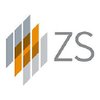Filter interviews by
Citco Interview Questions and Answers
88 Interview questions
I seek to leverage my analytical skills in a new domain to drive impactful operational improvements and broaden my professional horizons.
Desire for new challenges: I thrive in dynamic environments and want to tackle different operational issues.
Skill application: My analytical skills can be beneficial in various domains, such as finance or logistics.
Career growth: Transitioning to a new domain offers opportunities...
The trade life cycle encompasses all stages of a trade from initiation to settlement, ensuring accurate and timely processing.
Order Generation: The process begins when a trader places an order to buy or sell a security, which can be done through various platforms.
Order Execution: Once the order is generated, it is sent to the market where it is matched with a counterparty, resulting in a trade.
Trade Confirmation: ...
A premium is the amount paid for an insurance policy, reflecting the risk and coverage provided to the insured.
Definition: A premium is the cost of an insurance policy, paid periodically (monthly, quarterly, or annually) by the policyholder.
Factors Influencing Premiums: Premiums are determined by factors such as age, health, coverage amount, and type of insurance (e.g., life, health, auto).
Example: A young, health...
Call and put options are financial derivatives that give investors the right to buy or sell an asset at a predetermined price.
Call Option: A financial contract that gives the holder the right to buy an asset at a specified price before a certain date. Example: Buying a call option on stock XYZ at $50, expecting the price to rise.
Put Option: A financial contract that gives the holder the right to sell an asset at a...
NAV (Net Asset Value) represents the total value of a fund's assets minus its liabilities, indicating its per-share value.
Formula: NAV = (Total Assets - Total Liabilities) / Total Outstanding Shares.
Example: If a fund has $10 million in assets and $2 million in liabilities with 1 million shares outstanding, NAV = ($10M - $2M) / 1M = $8.
Importance: NAV is crucial for investors as it determines the price at which sh...
Corporate actions are events initiated by a company that affect its securities, impacting shareholders and investors.
Dividends: Companies may distribute a portion of their earnings to shareholders, either in cash or additional shares.
Stock Splits: A company may split its stock to increase liquidity, making shares more affordable for investors.
Mergers and Acquisitions: When companies merge or one acquires another, ...
In private equity, the ultimate risk is borne by the investors, particularly limited partners, due to capital commitment and market volatility.
Limited Partners (LPs) invest capital but have no control over day-to-day operations, exposing them to market risks.
General Partners (GPs) manage the fund and make investment decisions, but they also risk their own capital and reputation.
Operational risks can arise from por...
The two primary waterfall models in private equity are the European and American waterfall structures, defining profit distribution.
European Waterfall: Returns are distributed to investors only after all capital is returned and profits are realized.
Example: A fund must return all invested capital before GPs receive any carried interest.
American Waterfall: Allows GPs to receive carried interest on profits as they a...
Swaps are financial derivatives where two parties exchange cash flows or liabilities to manage risk or speculate.
Types of swaps include interest rate swaps, currency swaps, and commodity swaps.
In an interest rate swap, one party pays a fixed interest rate while receiving a variable rate, and vice versa.
Currency swaps involve exchanging principal and interest payments in different currencies, useful for hedging for...
Accruals are accounting entries that recognize expenses or revenues that have been incurred or earned but not yet recorded.
Accruals ensure that financial statements reflect all relevant financial activity within a period.
Example: If a company owes $1,000 for services received in December but pays in January, an accrual entry is made in December.
Accruals can be for expenses (like unpaid wages) or revenues (like ear...
Citco Interview Experiences
149 interviews found
(5 Questions)
- Q1. Cdd edd sdd difference
- Ans.
Cdd, edd, and sdd are terms used in the field of project management to refer to different types of project schedules.
Cdd stands for Contractual Delivery Date, which is the date by which the project must be completed as per the contract.
Edd stands for Estimated Delivery Date, which is the date by which the project is estimated to be completed based on current progress.
Sdd stands for Scheduled Delivery Date, which is the...
- Q2. Regulatory websites
- Q3. Organizational charts ,risk factors
- Q4. Risk thresholds, explanation of documents for different types of investor types
- Ans.
Understanding risk thresholds and documents for different investor types
Risk thresholds refer to the level of risk an investor is willing to take on in their investments
Different types of investors (e.g. retail, institutional, accredited) have varying risk tolerances and requirements for documentation
Documents for retail investors may include prospectuses, account statements, and risk disclosure forms
Institutional inve...
- Q5. Screenings,high risk factors
(5 Questions)
- Q1. What is Derivatives
- Ans.
Derivatives in finance are financial instruments whose value is derived from an underlying asset or group of assets.
Derivatives can be used for hedging against risk, speculating on price movements, or gaining exposure to assets without owning them.
Common types of derivatives include options, futures, forwards, and swaps.
Options give the holder the right, but not the obligation, to buy or sell an asset at a specified pr...
- Q2. What is financial Markets
- Ans.
Financial markets are platforms where buyers and sellers trade financial assets such as stocks, bonds, currencies, and commodities.
Financial markets facilitate the flow of capital between investors and borrowers.
They provide liquidity and price discovery for financial assets.
Examples include stock exchanges like NYSE and NASDAQ, bond markets, forex markets, and commodity exchanges.
- Q3. V Lookup, X Lookup, H lookup
- Q4. Experience in SQL And Power bi
- Ans.
Experience in SQL and Power BI is essential for this role.
Proficient in writing complex SQL queries to extract and manipulate data
Experience in creating interactive reports and dashboards using Power BI
Ability to optimize queries for performance and efficiency
Familiarity with data modeling and visualization techniques
Knowledge of DAX (Data Analysis Expressions) language for Power BI
Experience in connecting to various d...
- Q5. Internship Experience
- Ans.
I completed a summer internship at a financial firm where I analyzed market trends and created financial models.
Conducted market research to identify investment opportunities
Utilized Excel and financial software to create models for forecasting
Presented findings to senior analysts and executives
Collaborated with team members on various projects
I applied via Referral and was interviewed in Dec 2024. There were 3 interview rounds.
It’s very hard be prepared with reasoning math and logical questions
(1 Question)
- Q1. Asking about previous experiences
(1 Question)
- Q1. Asking about related process and capital market and derivatives, prime broker and otc market questions
Interview Preparation Tips
I applied via LinkedIn and was interviewed in Sep 2024. There were 4 interview rounds.
First round was a 1 hour online exam which had 2 sections. 1 was aptitude round which included questions like 'select the appropriate word that matches the goven word' , graph reading etc. 2nd round was technical - accounting entries , basics of SFM , FR
Video assessment - 8 questions were asked. Accrual , deferred entries, hedge fund definition , fund acconting definition , diff b/w management fee and performance fee. Question will be displayed. 1.5 mins reading time. and after should record the answer within given 2 mins time
(1 Question)
- Q1. A telephonic interview. Basic HR quesitons - about present job , why job change , expected CTC
(1 Question)
- Q1. Online interview - around 40-45 mins. Mostly technical. Intro about yourself , questions from resume , what did you understand about the job description , accrual and deferred entries based on given case s...
Interview Preparation Tips
I applied via Approached by Company and was interviewed in Oct 2024. There was 1 interview round.
(3 Questions)
- Q1. Deeivatives and its types
- Ans.
Derivatives are financial instruments whose value is derived from an underlying asset or group of assets.
Types of derivatives include options, futures, forwards, and swaps.
Options give the holder the right, but not the obligation, to buy or sell an asset at a specified price before a certain date.
Futures are contracts to buy or sell an asset at a predetermined price on a specified date in the future.
Forwards are simila...
- Q2. Management fee, performance fee and admin fee
- Q3. Diff btwn gav and nav
- Ans.
GAV (Gross Asset Value) is the total value of a fund's assets, while NAV (Net Asset Value) is the value of the fund's assets minus its liabilities.
GAV includes all assets owned by the fund, such as investments, cash, and receivables.
NAV is calculated by subtracting the fund's liabilities, such as expenses and debts, from its total assets.
GAV is used to determine the overall value of the fund, while NAV is used to calcu...
I applied via Approached by Company and was interviewed in Jul 2024. There were 3 interview rounds.
(2 Questions)
- Q1. System Design like Tiny url
- Ans.
Design a URL shortening service like TinyURL to efficiently manage and redirect long URLs.
Use a hash function to generate a unique short code for each long URL.
Store the mapping of short codes to long URLs in a database.
Implement a redirect service that takes the short code and retrieves the corresponding long URL.
Consider using a custom domain for branding (e.g., 'short.ly').
Implement analytics to track usage of short...
- Q2. Java 8 features
(2 Questions)
- Q1. Java 8 streams questions
- Q2. Project discussion
(2 Questions)
- Q1. Current project design and architecture
- Ans.
Current project design and architecture involves microservices architecture with containerization using Docker and Kubernetes.
Utilizing microservices architecture for scalability and flexibility
Containerizing applications using Docker for easy deployment and management
Orchestrating containers with Kubernetes for automated scaling and load balancing
- Q2. Java spring boot JPA
I applied via Walk-in and was interviewed in Aug 2024. There were 2 interview rounds.
Easy Questions are there but you need to be Quick...!
(2 Questions)
- Q1. What is Equity?Stock Split , Dividends, Right Issue, Bonus Issue
- Ans.
Equity represents ownership in a company and can be affected by stock splits, dividends, right issues, and bonus issues.
Equity represents ownership in a company, giving shareholders a claim on assets and earnings.
Stock splits increase the number of shares outstanding while decreasing the share price proportionally.
Dividends are payments made by a company to its shareholders from its profits.
Right issues allow existing ...
- Q2. Journal entry, Accrual, prepaid PostPaid,
Interview Preparation Tips
- Journal entries
- Corporate Actions
I appeared for an interview before Jun 2024, where I was asked the following questions.
- Q1. How are yountoday
- Q2. About my current Designation
I appeared for an interview in Mar 2025, where I was asked the following questions.
- Q1. What is NAV, and how do you calculate it?
- Ans.
NAV (Net Asset Value) represents the total value of a fund's assets minus its liabilities, indicating its per-share value.
Formula: NAV = (Total Assets - Total Liabilities) / Total Outstanding Shares.
Example: If a fund has $10 million in assets and $2 million in liabilities with 1 million shares outstanding, NAV = ($10M - $2M) / 1M = $8.
Importance: NAV is crucial for investors as it determines the price at which shares ...
- Q2. What are corporate actions?
- Ans.
Corporate actions are events initiated by a company that affect its securities, impacting shareholders and investors.
Dividends: Companies may distribute a portion of their earnings to shareholders, either in cash or additional shares.
Stock Splits: A company may split its stock to increase liquidity, making shares more affordable for investors.
Mergers and Acquisitions: When companies merge or one acquires another, it ca...
Interview Preparation Tips
I applied via Campus Placement and was interviewed in Aug 2024. There was 1 interview round.
(3 Questions)
- Q1. Prepaid Accrual JE situational questions
- Q2. Derivates, call put
- Q3. Tell me about yourself
- Ans.
I am a detail-oriented and analytical individual with a strong background in accounting and finance.
Graduated with a degree in Accounting
Worked as a financial analyst for 3 years
Proficient in financial reporting and analysis
Strong attention to detail and problem-solving skills
Interview Preparation Tips
Top trending discussions






Citco Interview FAQs
Some of the top questions asked at the Citco interview -
The duration of Citco interview process can vary, but typically it takes about less than 2 weeks to complete.
Tell us how to improve this page.
Citco Interviews By Designations
- Citco Fund Accountant Interview Questions
- Citco Senior Fund Accountant Interview Questions
- Citco Supervisor Interview Questions
- Citco Analyst Interview Questions
- Citco Operations Analyst Interview Questions
- Citco Senior Operations Analyst Interview Questions
- Citco Senior Analyst Interview Questions
- Citco Accountant Interview Questions
- Show more
Interview Questions for Popular Designations
Overall Interview Experience Rating
based on 134 interview experiences
Difficulty level
Duration
Interview Questions from Similar Companies
Citco Reviews and Ratings
based on 1.1k reviews
Rating in categories
|
Supervisor
1k
salaries
| ₹8.4 L/yr - ₹22 L/yr |
|
Senior Fund Accountant
886
salaries
| ₹5 L/yr - ₹14.6 L/yr |
|
Fund Accountant
606
salaries
| ₹3 L/yr - ₹12.3 L/yr |
|
Assistant Vice President
470
salaries
| ₹12.5 L/yr - ₹36 L/yr |
|
Operations Analyst
448
salaries
| ₹4 L/yr - ₹8.4 L/yr |

Deloitte

Ernst & Young

PwC

KPMG India
- Home >
- Interviews >
- Citco Interview Questions













